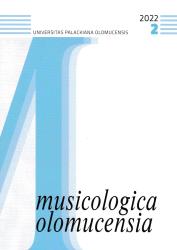Rorátní repertoár v moravských kancionálech 17. a 18. století
Rorate Repertoire in Moravian Hymnbooks of the 17th and 18th Centuries
Author(s): Tomáš SlavickýSubject(s): Music, 17th Century, 18th Century, Sociology of Art, Sociology of Religion
Published by: Univerzita Palackého v Olomouci
Keywords: Czech hymnography; Central European hymnography; Rorate repertory; Czech Rorate chants; manuscript hymnbooks in Moravia;
Summary/Abstract: The development of the rich Rorate repertoire in the Czech lands and Central Europe, based on Advent hymns in the vernacular, was caused by a long tradition of everyday “Rorate” Advent morning masses, which were cultivated by lay religious confraternities and later by parish churches. The Czech Rorate chants, which originated in 16th century Utraquist Bohemia and is still partially alive today, was only one of many forms of this repertoire. Additional layers of the Rorate repertory in Latin and Czech are documented in the Moravian printed and manuscript hymnbooks. Their forms are monophonic and polyphonic, in plainchants, strophic hymns and figural compositions. This regional repertoire has ties with Utraquist and recatholization Bohemia, and at the same time with neighbouring hymnographies. As evidenced by certain Early Modern cancionales in German, Polish, Slovak, Hungarian and Croatian, in Moravia we can find a Czech-language form of the basic Rorate repertory, common to most countries of the former Jagiellonian and later Habsburg commonwealth.
Journal: Musicologica Olomucensia
- Issue Year: 34/2022
- Issue No: 2
- Page Range: 29-52
- Page Count: 24
- Language: Czech

